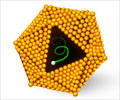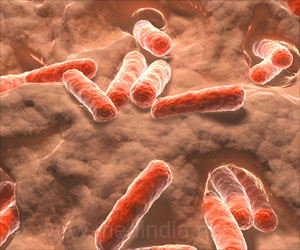Researchers at Oregon Health and Science University have developed a technique to turn a mouse into a factory for human liver cells.
Researchers at Oregon Health and Science University have developed a technique to turn a mouse into a factory for human liver cells. The new development can be used to test how pharmaceuticals are metabolised in the organ so as to determine drugs’ toxicity.
The researchers claim that their technique also offers a platform for testing new therapies against infectious diseases that attack the liver, such as hepatitis C and malaria."This has the potential, if it becomes easy to use and widely available, to change the way drugs are tested," Nature magazine quoted study leader Dr. Markus Grompe, Professor of Molecular and Medical Genetics, and Paediatrics, as saying.
"In terms of fostering research, this will be great for malaria, this will be great for hepatitis, this will be great for liver stem cells, this will be great for gene therapy. It will allow a lot of what's going on only in rodents to be taken into a much more clinical setting. So I'm very happy about it," he added.
Arundeep S. Pradhan, the Director of OHSU's Technology & Research Collaborations office, says that the demand for Grompe’s discovery is very high in the market.
The university has filed a patent application on the technology, and formed a new company in Portland called Yecuris through its Springboard Program.
"Yecuris is a viable start-up company based on significant developments at OHSU. The products developed by Yecuris have the potential to ease one of the bottlenecks in drug development: the testing of drugs for liver toxicity," Pradhan said.
Advertisement
"Chemicals are converted to other chemicals in the liver, and you can't predict how the compound you developed in the lab will be converted. Often, it's not the drug that's toxic, but the resulting metabolites. The conversion of drugs cannot be predicted with any current technology, such as computer models. You actually have to see what human liver cells do with any given drug," Grompe said.
Advertisement
"Our mice on this medicine are perfectly healthy, normal mice, and only when we take them off the NTBC do they get liver disease. It's an easy system that any research lab should be able to set up, which is very different from what's around now," Grompe said.
The human liver cells from the repopulated mouse livers are indistinguishable from normal human liver cells.
"The healthy human liver cells take over and replace the sick mouse liver cells. You end up with a healthy mouse that makes human blood clotting factors, all the proteins the liver makes, human bile, everything," Grompe said.
Each mouse can be implanted with human liver cells at least four times, and each round of implantation can generate over 20 million viable human liver cells.
"We think we will have a real edge in terms of quality and availability of cells. We have a product. All we need to do is scale up and start selling it to anyone who wants to buy it," Grompe said.
Source-ANI
SRM/J











